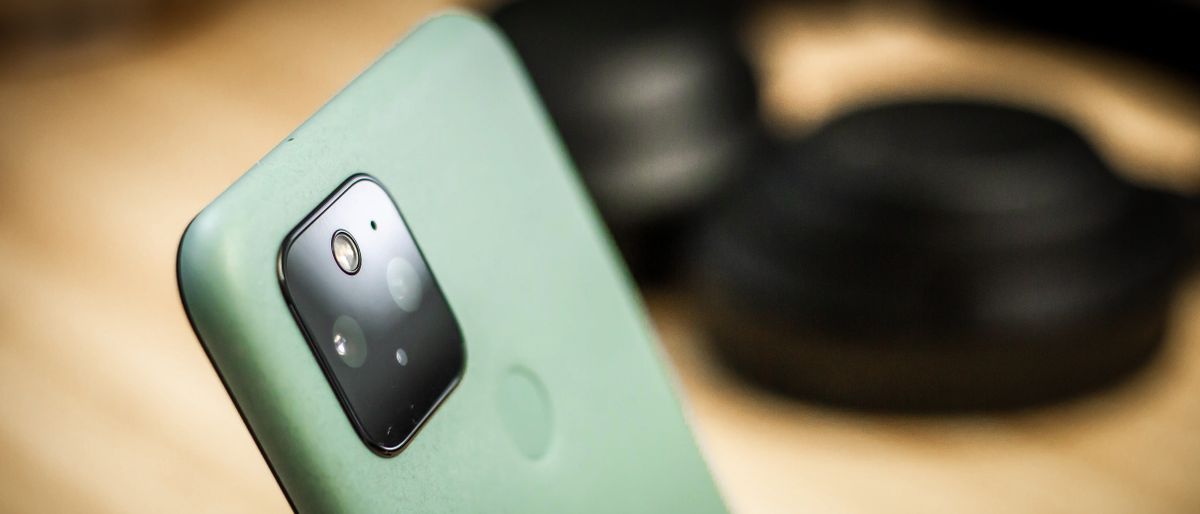Digital Camera World Verdict
The Google Pixel 5 is one of the most fuss-free, fun, capable point and shoot camera phones out there. At $699 / £599, it’s a fraction of the price of previous Pixels, while still delivering a pure Google experience. In day to day use, it’s a treat thanks to a compact design and reliable camera. While there isn’t a telephoto lens or much in the way of new tech here, it all comes together beautifully nonetheless. Unless you need zoom or extra processor oomph for gaming, this all makes the Google Pixel 5 a knockout phone across the board.
Pros
- +
Excellent point and shoot camera
- +
Great battery life
- +
Wireless charging
- +
Water resistance
Cons
- -
No expandable storage
- -
No telephoto camera
- -
Midrange power
Why you can trust Digital Camera World
Can the Google Pixel 5 go one better than its predecessor? The Pixel 4 wasn’t a win for Google. Its camera was great - point, shoot, and you had a good looking photo with great tonal range and solid clarity for a 12MP sensor. That said, it was expensive, occasionally buggy and its battery life left a lot to be desired.
A year on and the world is a very different place. Expensive phones that aren’t made by Apple are widely panned for being out of touch, and brands like Poco, Realme, and Xiaomi are becoming increasingly popular, with their high-spec, high-value options winning frugal buyers over.
Google started to flip the script last year, launching the affordable Pixel 3A, and it was good. That said, anyone who wanted flagship features and a Pixel camera had to spend the big bucks - until now.
With its high refresh-rate screen, the Pixel 5 is as smooth as the Pixel 4, comes with water resistance and wireless charging, and sports a quirky, very Google look.
It isn’t all flagship though. The Pixel 5 is powered by a Snapdragon 765G chipset, there’s no under-display fingerprint scanner, it’s an old school, around the back dimple, and arguably the biggest misstep - there’s no telephoto camera.
Still, with a 4080mAh battery as well as 128GB storage, there’s hope for the Pixel 5, and its melange of flagship and midrange elements - so what’s it like to use for a week?
Design and screen
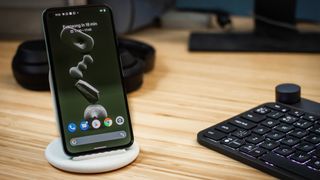
Combining a 6-inch screen size and a 1080 x 2340 resolution, the Pixel 5 is tiny compared to most phones currently spilling over palms and out of pockets. Measuring 8mm thin, while it isn’t the most slender current-gen phone — that’s the OPPO Reno 4 Pro; it isn’t far off, and its footprint is charmingly compact. Putting the fun back into the Pixel line, the phone’s styling is standout - specifically in the Sorta Sage color option that we reviewed, and it’s refreshingly basic looking (not a criticism).
Design highlights include a textured, almost recycled bamboo finish around the back - think cardboard meets metal. It adds the warmth of a plastic phone to the rigidity of a metal frame, so makes the Pixel 5 feel that bit, friendlier? This isn’t a high-gloss flagship.
The screen is also beautifully integrated into the Pixel 5’s cutesy, clean look. It has a uniform bezel around all four sides, and as a result, is a joy for OCD folks to just gaze at. The resolution and clarity are respectable, and a 90Hz refresh rate in line with the competition.
Screen quality is great on the Pixel 5, viewing angles are strong, and while there is some blue shifting with extreme tilts, it isn’t anything to grump about. What is particularly handy about the Pixel 5’s screen is its shape. It’s ever so slightly wider than many phones being launched now, giving you a little extra width when typing despite its dainty size.
So while when we first picked up the Pixel 5, we weren’t sure about its size, finish, and design in general, after a week, it’s a charming, practical phone that’s won us over completely.
Cameras
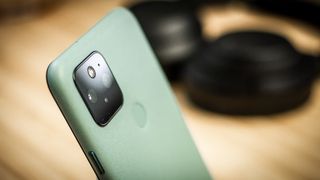
The Google Pixel 5’s main camera module features a 12.2MP resolution with an f/1.7, 27mm lens. This is nothing new, the 1/2.55" sensor has been around for years, combining 1.4µm pixels, dual pixel PDAF and OIS.
There’s no telephoto camera here, just a secondary ultrawide lens with an f/2.2, 107˚ field of view, combined with 16MP resolution sensor with 1.0µm pixels.
On paper, all this reads like a premium midranger… from 2019.
Google’s cameras have never been about the hardware though; the software on the Pixel series takes a mediocre camera setup and elevates it to excellence - and in the Pixel 5 it’s no exception.
With a front camera resolution of 8MP, combined with an f/2.0, 24mm lens, the punch hole selfie camera shoots with a crop of 1.4x by default, but can be expanded out. This gives the illusion of a dual-camera without the ugly, large dual-camera cutout.
Shooting modes include Night Sight, Portrait, Auto, Panorama, Photo Sphere and Lens. There’s no manual mode on the Pixel 5, so that will put off some. However, with RAW shooting, and generally reliable exposure from the automatic mode, in addition to an on-screen exposure slider, you may well have all the controls you need nonetheless.


Camera performance
The thing Google does better than any other manufacturer is balance broad tonal ranges with rich colors and a realistic look. Subjects tend to look reliably great, whether a person, cat, or landscape. Detail is absolutely fine for a 12MP camera phone. The Pixel 5 can’t compete with the Galaxy Note 20 Ultra or upcoming Xiaomi Mi 10T Pro, with their 108MP sensors. Having said that, it beats the high-resolution competition with its processing.
Unlike Samsung photos, those from the Pixel 5 don’t look oversharpened, dark areas aren’t brightened up to the point of looking like early-2000s HDR efforts, and the reliable processing actually makes photos seem sharper than they are before you pinch into them. Even when you do, the Pixel 5’s pictures seldom fall apart.
Colors are nuanced, looking zingy in certain scenes, and subdued in others. White balance can be a bit inconsistent across modes - the Portrait mode, for example, warms things up a bit, while the automatic mode leans more towards cool hews. Saturation is also dynamic depending on the image you’re shooting, and Google’s photo-processing algorithms are better than ever on the Pixel 5 at capturing the shot we were going for.



Noise handling in dim to well-lit scenes is elegantly managed in automatic mode. If the phone detects you’re holding it very still and the subject isn’t moving, it keeps capturing information for longer. In turn, the Pixel 5 takes every opportunity to eke out image noise from shots, and the results impress.
In low light, Night Sight is still one of the best solutions on the market, seeing in the dark and artificially brightening things up. Rest the phone on a surface, and as with the Pixel 4, the latest Google phone keeps the shutter open in excess of four minutes, flipping into Astrophotography mode.
The fact Google’s smart software is such a big part of its excellent imaging experience has everything to do with the ultrawide camera too. The same qualities exhibited by the main camera — great dynamic range, tonal and color balance, can be found on ultrawide shots. There’s very little in the way of distortion, and Night Sight helps it out when the lights drop. Despite its 16MP resolution, it isn’t as sharp as the main camera when shooting subjects less than one meter away — little surprise given it doesn’t pack autofocus. Keep your ultrawide camera for distance shots, however, and it’s a great tool.
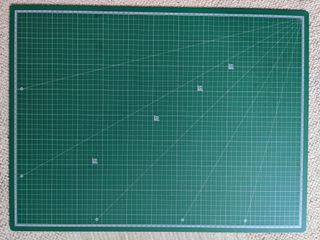
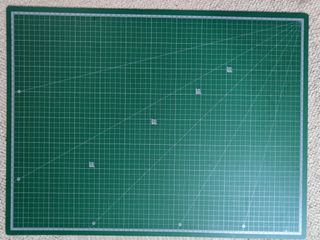
The lack of a telephoto lens is a letdown. Unlike last year’s Pixel 4 XL though, there’s clearly no physical room for a telephoto on the dainty Pixel 5 - this is a small phone. Additionally, the digital zoom is very usable for social shares up to three times crop.
One area the Pixel 5 can’t beat the Apple and Huawei competition is portrait photos. They look great when there’s an easy subject clearly stepped ahead of a high-contrast backdrop, but edge tearing is worse than on an iPhone 11 Pro Max when you pinch in.
Meanwhile, video, captured at up to 4K, 60fps looks fantastic on the Pixel 5. It’s beautifully held together, with four stabilization options: Standard, Locked, Active and Cinematic Pan. Additionally, videos deliver shallower depth than we expected, and focuses both smoothly and quickly. In low light, it doesn’t hold up fantastically, but it’s at least very competitive.
Google Pixel 5: Additional specs
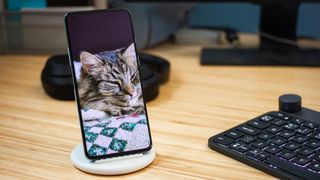
Powered by a Snapdragon 765G paired with 8GB RAM, there’s nothing flagship about the Pixel 5’s internals, but honestly, who cares? Gamers — that’s who.
We’ve reached a threshold with smartphone power now. Midrange processors are good enough for lag-free everyday experiences. The Snapdragon 765G has proven itself time and time again, from the OnePlus Nord to the Motorola RAZR 5G, it’s a solid performer. Even if you are a gamer, we played a good amount of Genshin Impact — a graphically intensive game on the Pixel 5, and noticed hardly any frame drops.
Running Android 11, the Pixel line is as futureproofed as any Android phone can be from a software point of view, and with Google Play support and a familiar, smart interface complete with accessibility and live transcription tools, we found the Pixel 5 to be filled with useful easter eggs.
Also of note, Google has finally caved when it comes to storage. No, it still hasn’t added a microSD card slot to its phone, but it has bumped up the starting capacity to 128GB. In fact, that’s the only capacity, but it’s a huge step in the right direction, up from 64GB last year.
Rounding off, the 4080mAh battery, which charges at up to 18W lasts and lasts. Having just reviewed the more powerful OnePlus 8T, which has a higher capacity cell, we were surprised to get so much more real-world use out of the Pixel 5.
The experience isn’t without its quirks on any Google phone. Pixels offload a lot of thinking to the cloud, so whether editing your pictures or capturing a photo, if you don’t have a connection, something may hang here or there. It was the same for the flagship powered Pixel 4. This idiosyncrasy, however, is much easier to stomach when the price is a bit lower and the rest of the experience so good.
Google Pixel 5: Verdict
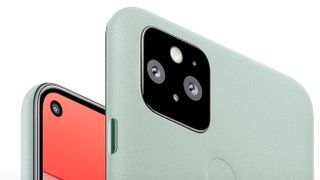
Google still charges a Pixel premium for the Pixel 5, but this time, the right kinds of compromises have been made to hit an accessible price. Some flagship features are on offer: a high refresh rate display, water resistance, wireless charging - all very welcome for the price. But while other Android options may offer more for less, nothing else comes together quite as well as it does on the Pixel 5.
The camera is probably the most reliable point and shoot available on a smartphone; no hardware bells or whistles, just point, shoot, and Google’s smart software does the rest. If you know you’ll need optical zoom or a lot of flexibility with crops - opt for a higher resolution alternative like the Galaxy Note 20 Ultra or the Huawei P40 Pro Plus. That said, if you’re not an iPhone user and want a seriously reliable, simple camera and a great phone, the Pixel 5’s no-fuss approach could well make it the best camera phone of 2020 to date.
Read more:
• Best camera phone in 2020
• Best budget camera phones
• Best iPhone for photography
• Best burner phone
• Best 5G phone
• Best phablets
• Best flip phones
• Best phablets
Basil Kronfli is a freelance technology journalist, consultant, and content creator. He trained in graphic design and started his career at Canon Europe before moving into journalism. Basil is also experienced in video production, independently running the YouTube channel TechEdit, and during his time at Future, he worked alongside the Digital Camera World team as a senior video producer.
